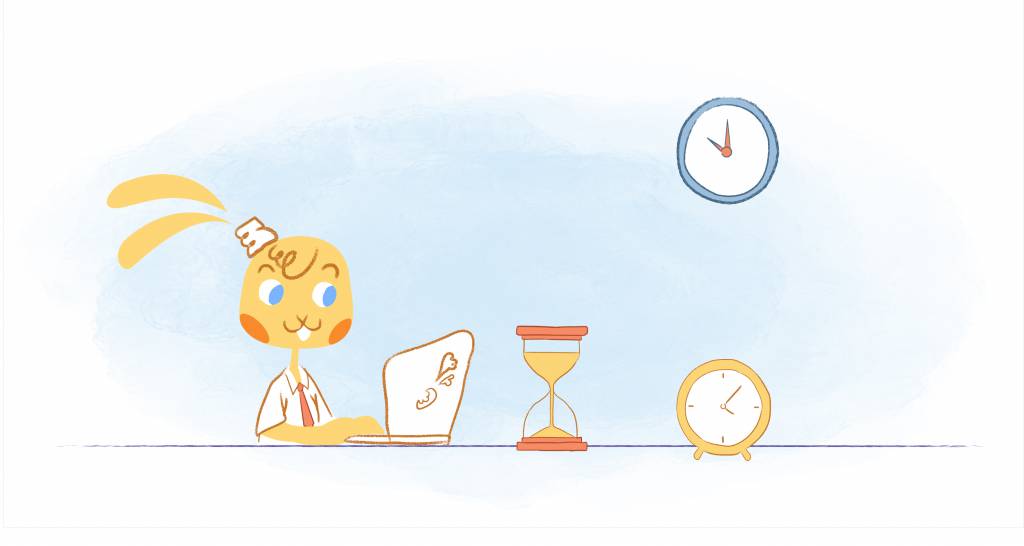

One of the great things about being an entrepreneur is that you don’t have to abide by too many rules. Instead, you can create them.
When it comes to productivity however, there are a few rules that you might benefit from. The 80/20 productivity rule is one of them. It clearly states that 80% of your results come from 20% of your efforts. This principle was developed by Vilferdo Pareto, an Italian economist and sociologist who first observed the rule when analyzing wealth and income distribution trends in Europe.
He found that 20% of the population owned 80% of the wealth. The 80/20 rule can be applied to various different situations but small business owners can use the 80/20 productivity rule specifically to become more efficient with how they spend their time and how they run their business. Here’s how to use this rule to your advantage.
Carefully Look At Where You’re Spending Your Time
We all distribute our time and productivity throughout the day. When it comes to your small business, determine what you’re spending time on during each work hour if you can.
This provides the perfect opportunity to look at your calendar and be completely honest about what you’re doing with all your time. Once you narrow down your daily tasks, see if you can group them based on the type of work.
For example, maybe you spend time working on sales and marketing, training your team, producing products, writing content, etc. When you have your groups established, it’s time to start measuring results. Most people choose to measure rules by profit, but if you are building up a certain area of your business, you may want to use another factor to measure what you’re able to produce.
But let’s say for this example, you choose income and profit. You’d look at which tasks are the most profitable for you. Some tasks may not generate any income for your business and therefore you may want to limit the time you spend on them.
Take Care of Your 20% First
If you’ve found that 20% of your effort is really resulting in 80% of your results, you’ll want to prioritize and improve that 20% margin. This often means taking care of it first when you begin your workday. Are there any tasks that would make you feel relieved by accomplishing them, no matter what else happened during the day?
If you are a freelancer, this task may be your client work. Once client work is completed and turned in, you know you’ll be getting paid. From there, if you can’t respond to emails quickly enough or do outreach, it’s not such a detriment to your productivity and daily schedule.
Plan to schedule your most results-driven tasks early in the day so you can ensure the success of your business. You will work in stretches, but the first stretch will often be more important/meaningful than the final stretch.
Don’t Waste Too Much Time on the Other 80%
So we know that the 80/20 productivity rule is pretty clear. We know we’ll have to do tasks that will fill up the remaining 80% of our time and effort. Still, it’s important not to spend way too much time on these tasks because they may produce minimal results at best.
So what is technically considered too much time? It depends on how your workday is structured. If you’re simply performing daily short routine tasks, you can easily distribute your work based on the 80/20 productivity rule. However, what about larger projects? They are not so cut and dry nor are they always easy to divvy up. So how do you use this rule for them.
Just know that while your large project may be super important, the longer you spend on it, the fewer results you can expect to get. Does this mean that you should rush through the project to ensure it earns the best results? Not exactly.
What you need to focus on is how you distribute your time. According to the rule, the first 20% of your time and effort brings in 80% of the results. The second 20% brings in another 10% of the results and the third 20% (now we’re at 60% so far) typically brings in 3%. As the distribution continues, the percentage of results you generate get lower and lower.
In order words, it’s important to know when to call it quits and wrap up a project after you’ve contributed a significant amount of effort.
Get Feedback and Make Swift Changes
Once you’ve done all you can do on a task, you can always get feedback from your team or customers. If you’re stumped on a particular aspect of the task, ask for help or outsource it. This can help you preserve your productive energy for other work.
Getting feedback can also be helpful when it comes to saving you time and energy because it can help guide you in terms of changing your strategy or working more efficiently.
For example, I once spent an overwhelming amount of time trying to implement a new website design. My process was riddled with a ton of error, frustration, and there were times where I didn’t even understand what I was doing.
Had I knew about the 80/20 rule at the time, I would have understood how all my effort over the span of the week really wasn’t adding up to much. I needed to ask for feedback, advice, and be able to pivot when necessary so I didn’t waste large amount of time and get no results.
Summary
The 80/20 productivity rule is a prime example that most times, it’s best to work smarter over working harder. When you carefully distribute your time and energy based on this rule, you can be more productive in your business.
Prioritize the first 20% of your workday regarding the tasks you complete and know when it’s time to pivot and make changes when working on the remaining 80% to ensure you don’t waste too much productive time and energy.











Choncé Maddox
Choncé Maddox is a professional writer who recently left her job in the web design industry to produce killer content and manage her own writing business full time. She is passionate about helping entrepreneurs be more productive and create a life they love by doing fulfilling work. On the side, she runs a podcast and blogs about getting out of debt at MyDebtEpiphany.com.